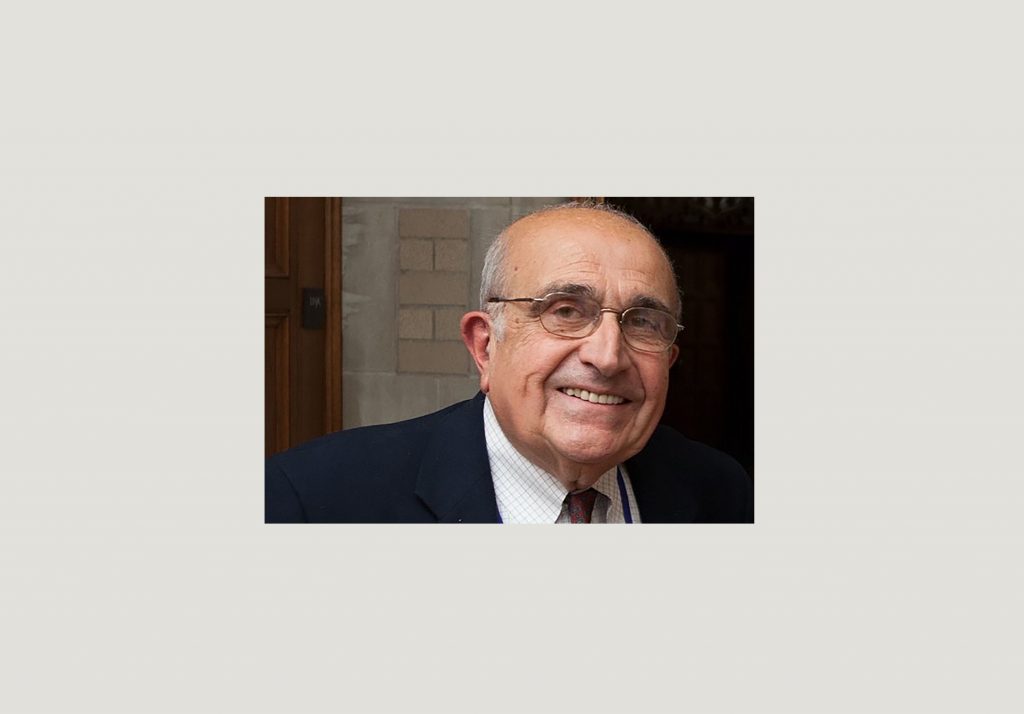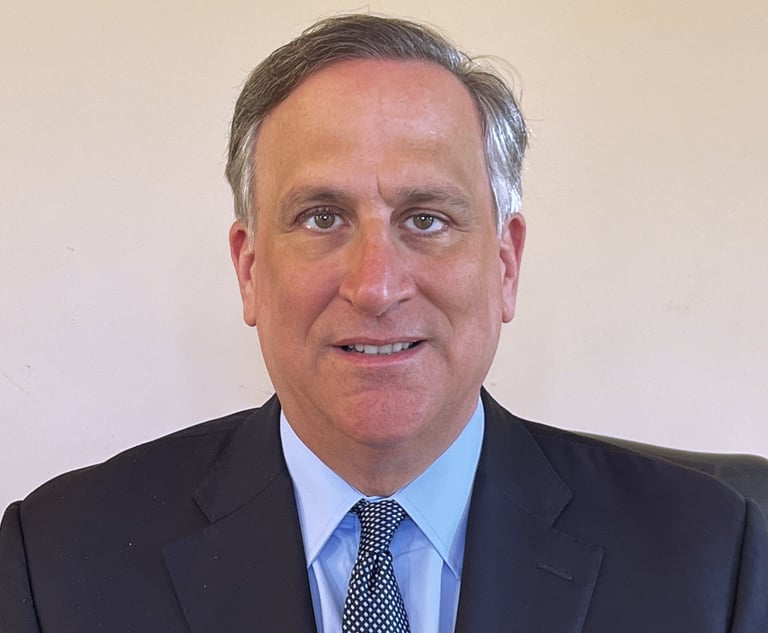COVID-19 and Online Dispute Resolution It's a Whole New World Out There
Online Dispute Resolution, or ODR, in its broadest definition refers to the coupling of technology with ADR. It has been a growing force in the ADR movement for several decades—a fast-coming phenomenon of the future.
April 01, 2020 at 11:34 PM
6 minute read
 Commercial arbitrator and mediator Harry N. Mazadoorian.
Commercial arbitrator and mediator Harry N. Mazadoorian.
COVID-19 related restrictions on travel and personal interactions have caused a surge of interest in the form of Alternative Dispute Resolution generally referred to as ODR, or online dispute resolution. As the pandemic has brought about expanded uses of online technology in areas such as medicine and distance learning , so too has ODR received unprecedented interest and attention.
ODR in its broadest definition refers to the coupling of technology with ADR. It has been a growing force in the ADR movement for several decades—a fast-coming phenomenon of the future. In 2000, the cover of the ABA's Dispute Resolution Magazine was emblazoned with the words "Internet Blazes New Path For Dispute Resolution" and contained a very thoughtful article by Ethan Katsh titled " The New Frontier: Online ADR becoming a global priority"
I've followed the development of the ODR movement for many years. The most recognizable leader in the movement, in my judgment, has been Colin Rule, who currently serves as vice president of Online Dispute Resolution at Tyler Technologies. My initial understanding of the early success of ODR was that it was most effective in low-dollar value, high-volume, largely consumer oriented disputes. In fact Rule, who had previously been with eBay and PayPal, refers to millions of such disputes.
More recently, I wondered if ODR could have a wider application in a broader spectrum of matters, including business-to-business disputes, disputes with a high emotional content and disputes within the judicial system. A series of ABA-sponsored online programs in late March demonstrated that the wider application is not only possible but is already robust and rapidly growing in both facilitative and adjudicatory processes.
The first of these programs took place March 17. Professor Sharon Press from Mitchell Hamline School of Law and Professor Noam Ebner of Creighton University presented a very practical program titled "Conducting Simulations Online in Conflict and Dispute Resolution Courses."
The participants in the second of these programs, on March 20, titled "ODR in the ERA of COVID-19: Experts Answer Your Questions" were Mr. Rule—who many, as do I, consider to be the godfather of ODR—Professor David Allen Larson of Mitchell Hamline School of Law and ODR system designer for the New York State Unified Court System, Professor Amy J. Schmitz of University of Missouri School of Law and co- author (with Colin Rule) of the book The New Handshake: Online Dispute Resolution and the Future of Consumer Protection. Interestingly, Professor Schmitz had been scheduled to speak about e-courts at the Quinnipiac/Yale ADR Speakers Series on that very day, which was cancelled.
The online presentations highlighted numerous critical ODR issues. First, new users should be mindful of the need to select a strong technological platform fitting the needs of the dispute at hand. Strong and competent technical assistance, guidance and backup support are essential.
Moreover, security is of paramount importance. At a minimum, disputants need to be assured that conversations in "private" internet individual caucuses are indeed private and not available for wider viewing. Additionally, it is essential that the playing field be equal.
Finally, numerous ethical issues must be considered. Appropriately, the third part of this trifecta of courses was a March 27 offering, "Ethical Considerations for Use of Online Tools for Dispute Resolution in the Covid-19 ERA." The principal presenter was Daniel Rainey, a longtime and highly knowledgeable practitioner involved in many aspects of the development of ODR. He pointed out that the principal drivers of ethics and standards of conduct in ODR are the Model Standards of Conduct for Mediators with a particular emphasis on self determination by the parties, technological competence by all participants—especially the neutral—and safeguarding confidentiality.
Nor has the flurry of ODR webinars been limited to the ABA. For example, the International Institute for Conflict Prevention and Resolution, one of the major national ADR players, is also offering programs on moving to online sessions.
There are many indicators that the ODR movement has gained a strong foothold in many settings. Just one: the website of the National Center for State Courts contains numerous references to expanded court-related ODR use and cites "statistics demonstrating significant and sustainable benefits that align with court mandates." A further example of the strides ODR has made are the standards adopted by the International Mediation Institute.
Even though some of the current use of ODR has accelerated more out of necessity than desire, the end result is that it is proving to be a critical addition to the ADR practitioner's toolbox. Fast-evolving and improving technology, together with the emergence of numerous increasingly specialized providers and platforms, are building upon an already proven track record portending even greater and easier access and success. Those active in the field of dispute resolution are becoming impressively conversant with many of ODR's subtleties. The growing level of familiarity and sophistication is impressive. At times it seems there is a race to see how many references to Zoom can be made in a single sentence!
Perhaps the movement is proceeding too rapidly. Even though ODR has been with us for decades, it is, in the words of a proposal to create an ABA Section of Dispute Resolution Task Force to thoroughly examine the phenomenon, "in a fairly nascent state, with minimal guidance, quality assurance or enforcement mechanisms for ODR system designers, providers, practitioners or consumers." Happily, the Task Force has been created, and with the help of some very knowledgeable members, it will examine and report on these vital issues.
In the meantime, there are cautions: The transition to ODR for first-time user comes with its share of challenges and opportunities. One challenge: limitations on the neutral's ability to evaluate a number of physical cues and behaviors of the participants which are available in a face-to-face setting. One opportunity: ODR may afford some capabilities not available in traditional face-to-face ADR use. Neutrals and disputants alike need to be fully cognizant of the potential and limitations of the processes and the technology.
But have no doubt: With the advent of ODR, It's a whole new world out there.
Harry N. Mazadoorian has served as a commercial arbitrator and mediator in numerous settings. He is the distinguished senior fellow at the Center for Dispute Resolution at Quinnipiac University School of Law.
This content has been archived. It is available through our partners, LexisNexis® and Bloomberg Law.
To view this content, please continue to their sites.
Not a Lexis Subscriber?
Subscribe Now
Not a Bloomberg Law Subscriber?
Subscribe Now
NOT FOR REPRINT
© 2025 ALM Global, LLC, All Rights Reserved. Request academic re-use from www.copyright.com. All other uses, submit a request to [email protected]. For more information visit Asset & Logo Licensing.
You Might Like
View All
ADVANCE Act Offers Conn. Opportunity to Enhance Carbon-Free Energy and Improve Reliability With Advanced Nuclear Technologies

Trending Stories
- 1Democracy in Focus: New York State Court of Appeals Year in Review
- 2In Vape Case, A Debate Over Forum Shopping
- 3SDNY Criminal Division Deputy Chief Returns to Debevoise
- 4Brownstein Adds Former Interior Secretary, Offering 'Strategic Counsel' During New Trump Term
- 5Tragedy on I-95: Florida Lawsuit Against Horizon Freight System Could Set New Precedent in Crash Cases
Who Got The Work
J. Brugh Lower of Gibbons has entered an appearance for industrial equipment supplier Devco Corporation in a pending trademark infringement lawsuit. The suit, accusing the defendant of selling knock-off Graco products, was filed Dec. 18 in New Jersey District Court by Rivkin Radler on behalf of Graco Inc. and Graco Minnesota. The case, assigned to U.S. District Judge Zahid N. Quraishi, is 3:24-cv-11294, Graco Inc. et al v. Devco Corporation.
Who Got The Work
Rebecca Maller-Stein and Kent A. Yalowitz of Arnold & Porter Kaye Scholer have entered their appearances for Hanaco Venture Capital and its executives, Lior Prosor and David Frankel, in a pending securities lawsuit. The action, filed on Dec. 24 in New York Southern District Court by Zell, Aron & Co. on behalf of Goldeneye Advisors, accuses the defendants of negligently and fraudulently managing the plaintiff's $1 million investment. The case, assigned to U.S. District Judge Vernon S. Broderick, is 1:24-cv-09918, Goldeneye Advisors, LLC v. Hanaco Venture Capital, Ltd. et al.
Who Got The Work
Attorneys from A&O Shearman has stepped in as defense counsel for Toronto-Dominion Bank and other defendants in a pending securities class action. The suit, filed Dec. 11 in New York Southern District Court by Bleichmar Fonti & Auld, accuses the defendants of concealing the bank's 'pervasive' deficiencies in regards to its compliance with the Bank Secrecy Act and the quality of its anti-money laundering controls. The case, assigned to U.S. District Judge Arun Subramanian, is 1:24-cv-09445, Gonzalez v. The Toronto-Dominion Bank et al.
Who Got The Work
Crown Castle International, a Pennsylvania company providing shared communications infrastructure, has turned to Luke D. Wolf of Gordon Rees Scully Mansukhani to fend off a pending breach-of-contract lawsuit. The court action, filed Nov. 25 in Michigan Eastern District Court by Hooper Hathaway PC on behalf of The Town Residences LLC, accuses Crown Castle of failing to transfer approximately $30,000 in utility payments from T-Mobile in breach of a roof-top lease and assignment agreement. The case, assigned to U.S. District Judge Susan K. Declercq, is 2:24-cv-13131, The Town Residences LLC v. T-Mobile US, Inc. et al.
Who Got The Work
Wilfred P. Coronato and Daniel M. Schwartz of McCarter & English have stepped in as defense counsel to Electrolux Home Products Inc. in a pending product liability lawsuit. The court action, filed Nov. 26 in New York Eastern District Court by Poulos Lopiccolo PC and Nagel Rice LLP on behalf of David Stern, alleges that the defendant's refrigerators’ drawers and shelving repeatedly break and fall apart within months after purchase. The case, assigned to U.S. District Judge Joan M. Azrack, is 2:24-cv-08204, Stern v. Electrolux Home Products, Inc.
Featured Firms
Law Offices of Gary Martin Hays & Associates, P.C.
(470) 294-1674
Law Offices of Mark E. Salomone
(857) 444-6468
Smith & Hassler
(713) 739-1250












